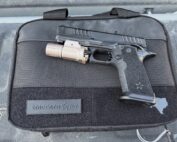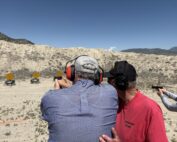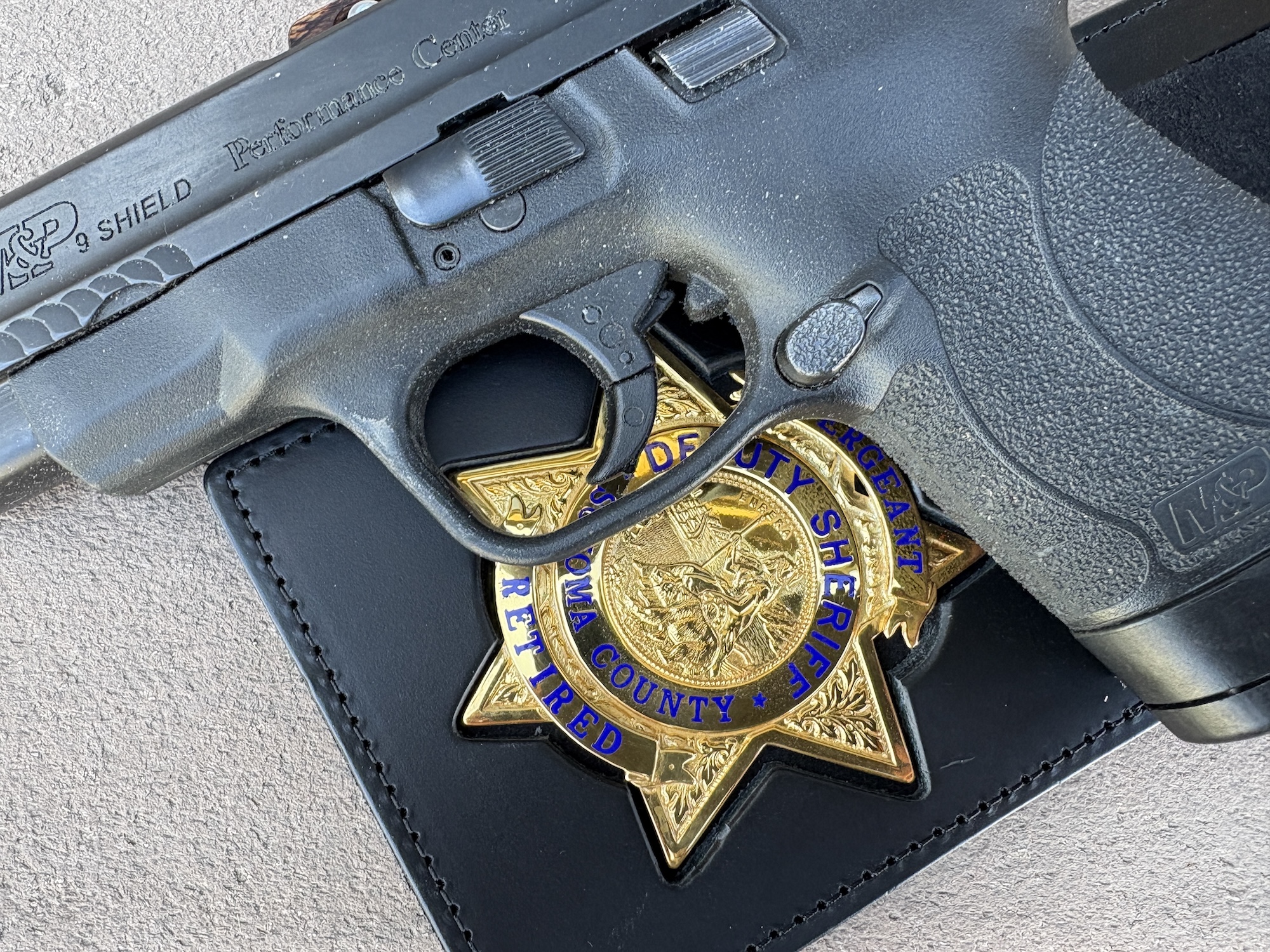
Rubble
Well, Tactical-ish, At Any Rate.
I get a lot of questions about “tactical tips and techniques,” some specific and some general. Those who ask the latter kind just wanta be entertained. They don’t care how long it takes; they’ve got lotsa time. For them, I lean forward, lower my voice and pause for dramatic effect. Then I whisper, “This… is the best, the least-known, the most esoteric piece of tactical wisdom I can give you: Never be in a shot-up, blown-out, cheese-holed all-concrete building when it decides, ‘Nah, I’m done ’ and collapses on you.”
I get some weird responses. A typical one is, “Huh? Is… Is that all?” I wave a hand over my body and ask, “What, you wanta wind up like this?” Then I laugh. Occasionally they do too, after a moment. Mostly not, but I don’t care.
Those who ask for specifics really wanna know, so I’ll give them all the time it takes. Thought I’d share a few with you if that’s OK. Understand this: I have not survived because I’m a tactical wizard or a super-soldier. I’m alive only by the grace of God and the poor marksmanship, lack of discipline and staggering stupidity of my enemies. A little of what I know I’ve learned from formal training. Most, I’ve learned from observing what works—and what gets people killed.
Too Tricky + Too Fast = FAIL
“Tactical Speed Reloading” and “reloading on the move” come up frequently. I don’t do either one. I do stable, sure and certain reloads, done as speedily as I can keep them assuredly stable and certain. I’ve seen highly trained well-disciplined men fumble reloads under firefight conditions even when they were behind cover and not trying to break any speed records. That’s just a product of “combat adrenaline.” I actually try to slow myself down and get it right, not rapidly wrong. Two illustrations:
A while back I saw some footage shot but not used for a commercial “tactical” video. The Ranger-Ricky-Guy, one of these fashionable Global Ninja Operator types, was demonstrating his speed tactical pistol reloading technique. Emptying his pistol 2-handed, he suddenly drops his support hand while continuing to fire, plucks a fresh mag from his worthless-for-anything-besides-competition mag pouch, between either his pinky and ring finger, or ring and middle finger, and comes up with it just as his pistol runs dry.
He pops the mag release, catches the empty mag between thumb and pointy-digit, and is supposed to insert that fresh mag and drop the slide, all at blazing speed. He fumbled it miserably if hilariously four times, then succeeded on the fifth, but somebody on the crew yelled out “Yay! Thank God!” too soon, so the whole thing had to be re-shot. Lots of yuks and high-fives, but this was intended as training! The clip I saw was supposed to be erased. People pay good money for this crap. Go figger, huh?
Back in my callow youth, I was reclining in a ditch, poppin’ the mostly-expended mag from my rifle, peepin’ it to see about how many rounds remained, checking my other mags, then carefully inserting a fresh one. I wasn’t lollygaggin’, but had no urgent appointments, hadn’t left the bath water running back home, and my opposition was busy fruitlessly expending their ammo.
A guy we already called “Hollywood,” because he acted like he was starring in a war movie, crashed down Hollywood-hard next to me, and in a blur of movement, popped out a presumably-empty mag, sorta threw a reload into his mag well, released his bolt, exploded to his feet and charged. The magazine he had just inserted fell at my feet. He was gone. I swear, he shot me a glance as he rose, as if checking to see if I was impressed with his coolness. I survived. Lesson learned.
Whether with rifle or pistol, I grab and manipulate magazines in a solid full-fisted grip, with my thumb pointing up close to the feed lips, guiding mags into place and assuring they’re locked in. Just practice after running a 100-yard dash, while balancing on an exercise ball, reciting the Gettysburg Address, holding a live rattler in your teeth. Or, while standing athwart the prow of the Leakin’ Lena in a Force 9 Gale. That oughtta do it!
This leads nicely into reloading-on-the-move, shooting-on-the-move and other silliness, so…
Tactical Tip No. 1: Try not to wind up here.
Gonna Move? MOVE!
I know these techniques are taught by “serious people,” but so are post-modern Marxist feminism and counter-cultural guerrilla dance theatre. Just my opinion from hard experience, but unless you’re down to a choice of doing it or definitively kissin’ your butt goodbye, I advise against it. Movement under real or potential fire means getting from Point A to Point B alive. Once there, if you’ve chosen Point B wisely, you can shoot or reload. Examples I’ve seen of the folly of both are too many to share here. I’ll keep it to this:
Once, within 60 seconds, I watched two guys (fortunately, bad guys) try to shoot, and one to reload, while attempting to traverse less than about 80 meters of ground from a truck park into a treeline. The ground was “flat,” but broken in detail; the kind of surface easily crossed if you’re steaming along and keeping an eye on your footing. Both tried to get fancy, firing to their sides and one to his rear. Both tripped and fell like comic actors—and stayed there, riveted to the deck with slugs. It was entirely possible they would have made it if they’d just ran!
Unless you’re running steadily straight away from your opponent, you’re unlikely to be hit “on purpose.” To Whom It May Concern shots are somethin’ else, and lie in higher hands. None of this hunchy-shouldered, head-pulled-in, half-speed trotting either, unless it keeps you under the top level of a solid wall. Your arms should be doing nothin’ but pumpin’ in synch with your legs to wring out maximum speed—and watch your footing!
The only exception to this rule is when you must charge straight at your armed oppo, in which case shooting goes from frivolous to favored status. It ain’t foolproof, but in my experience it yields the best results of any shooting-on-the-move. And that leads into: “effective fire.”
Many teach “The only effective fire consists of aimed, deliberate shots delivered to center mass of your opponent.” Just my opinion again, but Wrong-O! Any fire which causes your oppo not to do something beneficial for them or injurious to you, or to do something tactically unsound is, in fact, effective fire. You should learn some physical dynamics of ricocheting and “skipping” shots, for example, the tendency of small arms rounds, fired at steep or shallow angles to impact and then travel along fairly close to that hard surface, whether it’s along a vertical wall or horizontal hard deck. I’ve finished two and flushed four with “skippers.”
Closing Cadence
’Nuther related thing: Be very aware of your visibility and relative position. Example: In one fight several idiots took “cover” behind a flatbed trailer. They leaned tight over the deck, kept their rifles low and heads down. They could deliver pretty accurate fire—briefly. From hips to feet they were exposed. “Shootin’ their legs out from under ’em” ain’t a figurative statement. If any part of you is visible through a crack in a door, a knothole, whatever; if there’s even a change in light through that slice, that hole, somebody can put rounds on you.
Two sayings: If all you see is a piece of your target, shoot the piece! Shoot it to pieces, then shoot the pieces; elbows, fingers, noses, whatever. They may not be fight-ending shots, but they’re life-altering shots, I guarantee you.
Second, it ain’t enough to shoot somebody until you think he’s dead. You gotta shoot him until he thinks he’s dead. But you didn’t hear this from me. It ain’t “proper” or something. Connor OUT


 (No Ratings Yet)
(No Ratings Yet)













